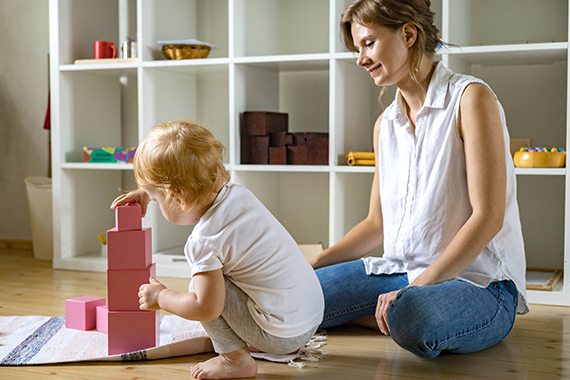Our Curriculum
Aiming to develop the whole child, the montessori curriculum is designed to include all of the below. As with our mission, the curriculum we believe will unlock the true potential. A detailed curriculum with activities will be available to you via the Transparent Classroom app, which allows you to track your child’s daily activities and overall developmental progress.

Practical Life
The most foundational area of the Montessori environment that introduces the child to care for self and the environment. Care for self starts with tying your own shoe laces, to buttoning shirts, to stitching and sewing. Care for the environment includes practicing activities like window washing, watering plants, etc..
Sensorial
Sensorial materials help children refine their senses. The Montessori environment digs deeper than the five senses. It focuses on helping children develop Visual, Tactile, Baric, Thermic, Auditory, Olfactory, Gustatory and Stereognostic senses. The materials are designed to isolate one skill and to be self-correcting. Knobbed Cylinders, Pink Tower, Brown Stair, Geometric Solids are some examples.

“The senses, being explorers of the world, open the way to knowledge. Our apparatus for educating the senses offers the child a key to guide his explorations of the world…”
“Any object that we wish to use for the education of the senses must necessarily present many different qualities such as weight, texture, colour, form, size, and so forth. How are we to isolate from many qualities one single one so that attention may be focussed on it? This is done by a series and its gradations; the objects are identical among themselves with exception of the variable quality which they posses.”

Math
Math in a Montessori classroom is learnt by manipulating materials. They explore various concepts using carefully designed materials. As they practice, the children notice patterns and relationships to learn place values, decimals, fractions etc..
Golden Beads, Bank Game, Number Rods, Stamp Game, Teen Frame are some examples.
“This system in which a child is constantly moving objects with his hands and actively exercising his senses, also takes into account a child’s special aptitude for mathematics. When they leave the material, the children very easily reach the point where they wish to write out the operation. They can thus carryout an abstract mental operation and acquire a kind of natural and spontaneous inclination for mental calculations.”
Language
It is the child’s ability to grasp speaking and writing that allows him to confidently interact with people around him. Language materials in the environment teach children the written and spoken languages. The materials help children absorb sounds, letters, word study,grammar, handwriting and spelling. They are designed to be absorbed through a broad variety of senses (viz, Visual, Touch, Auditory..).
Sandpaper Letters, Metal Insets, Movable Alphabets, etc.. are some examples.

“With the acquisition of language, the child reaches a new level of independence. The child can now communicate his feelings and desires and needs. It is a great step forward in the achievement of independence.”

Cultural and Geographical world
Cultural and Geographical study is the study of the man, the way they live, where they live, and the culture that was developed in the different parts of the world by them. It typically starts with the culture he lives in and expands to others.
Classified into Physical and Political, the former teaches the basic form of landmass, climate zones, and how they affect people who live in them. The latter focuses on the divisions of the world that humans have made out of the physical.
SandPaper Globe, Land and Water Forms, Painted Globe, Puzzle Maps are some examples.
